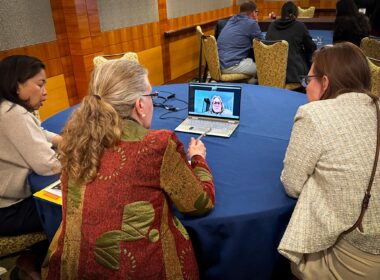Positions: 1-2 annually
Duration: 12 months
Website: http://aim.stanford.edu/
Description:
This is an innovative new program. Informatics is a broad field encompassing artificial intelligence, cognitive science, computer science, information science, and social science. The goal of this fellowship is to train physicians in informatics so they can be leaders in this growing field. One application for example is the use of Web 2.0 information technologies to improve education, research, and patient care. No experience in computer programming is required for this fellowship.
Curriculum:
The Fellow will be based in the Stanford Anesthesia Informatics and Media Lab under the direction of Dr. Larry Chu. The lab’s objectves are to:
- Innovate new uses of internet- and media-based technologies for research, clinical care and medical education;
- Develop and test new informatics approaches to support the broad missions of the Department of Anesthesia at Stanford. Develop new researchers to innovate the
field of anesthesia informatics;
- Conduct and publish research to generate new knowlege in the area of anesthesia informatics and produce a new generation of anesthesia informatics researchers;
- Promote use of informatics and media technology in medicine and teach other clinicians and researchers how to implement these techniques in their own work.
Knowledgebase for the Fellowship:
Medical Informatics
- How web 2.0 and semantic web technologies can be used to drive connectedness to information and how social networks can be utilized to improve anesthesia education, clinical care and patient safety
Informatics Tools
- How to design effective human-computer interfaces for informatics applications in medicine and anesthesia
Multimedia and Informatics Production Workflow
- How to create basic informatics applications using best practices and principals of good design How to produce and manage these projects
- How to publish and promote medical informatics or multimedia projects
Continuous Quality Improvement
- Learn principles of continuous quality improvement
- Apply principles to anesthesia informatics projects
Crisis Management and Patient Safety
- Learn principles of crisis management and applications to patient safety initiatives
- Apply these principles to anesthesia informatics projects
- Develop new simulation and patient safety initiatives using virtual networked
- environments
Statistics and Data Analysis
- Understand how to conduct basic quantitative and qualitative analyses of research data in
- order to interpret results and draw conclusions from informatics studies
Measurement Science
- How to design, test and deploy surveys to evaluate informatics applications
Research Project
Fellows will learn how to design and conduct research studies to evaluate the efficacy of informatics applications in the clinical and educational environments. Fellows will begin by selecting a research project with advice from faculty. The project can focus on clinical or educational informatics projects related to anesthesia. The fellow will be responsible for designing a research study proposal, conducting the study, and analyzing the results and preparing a manuscript for publication.
The fellow will audit courses in the University to provide didactic sessions regarding critical
principles of informatics.
Selection of coursework will be individually tailored for each fellow through discussion with
the Fellowship director based on previous experience and educational needs, but may
include:
Stanford EDUC 151: Introduction to Qualitative Research Methods
Stanford CS 106A: Programming Methodology (ENGR 70A)
Stanford CS 106A: Programming Methodology (ENGR 70A)
Stanford CS 147: Introduction to Human-Computer Interaction Design
Stanford EDUC 147X: Human-Computer Interaction in Education
Stanford EDUC 151: Introduction to Qualitative Research Methods
Stanford HRP 223: Epidemiologic Analysis: Data Management and Statistical
Programming
Monthly seminars and/or journal club provide instruction and opportunity to explore concepts with experts in informatics. Fellows are given reading prior to seminars which are then discussed. The Fellow chooses two projects to work on to gain real life experience in applying principles of informatics.
Stanford Anesthesia Informatics fellows in years 2010-11 and 2011-12 will have the unique opportunity to assist in planning and organizing the Fourth World
Congress on Social Media and Web 2.0 in Health, Medicine and Biomedical Research, a leading international medical informatics conference which is being organized by Dr. Chu at Stanford University for September 2011.
Faculty:
Larry Chu, MD, MS (Fellowship Director, Anesthesia Informatics)
Alex Macario, MD, MBA (OR Management, Clinical Informatics)
Kyle Harrison, MD (Patient Safety, Simulation, Educational Informatics)
Bassam Kadry, MD (Clinical Informatics)
Salary:
Salary for next academic year is $63,726 (based on PGY V level). To pay this salary, fellows work in the Stanford operating rooms. This requirement is fulfilled by working as an attending for 40 days, and take 32 calls. Of the 32 calls, 16 are “first” call sessions, 8 during weeknights (5pm – 7 am) and 8 taken on weekend or holiday days (8 am – 8 am). The remaining 16 calls will be second calls, taken only on weeknights (5pm – 7am). Vacation: 5 weeks not including meeting time.
Application:
The application requires a Curriculum Vitae, three letters of recommendation (one from your residency director), Medical School Transcript and Dean’s Letter (you may request your anesthesia program director/coordinator to send this for you), and a one-page essay describing your career plans. Please keep in mind that to take the position at Stanford, you would need a California medical license.
You may email information to AIMLABSTANFORD@gmail.com and have physical transcripts and letters of recommendation mailed to:
- Stanford AIM Lab, 300 Pasteur Drive, Grant Building Room S268C, Stanford, CA 94305.
Phone: 650-723-6632.
Fellowship Director and Contact person: Dr. Larry Chu, MD, MS





